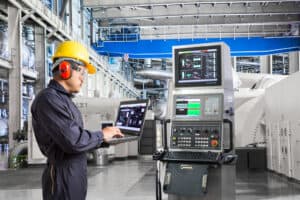
Rather than displacing workers, employment will only grow with the adoption of these technologies.
Read enough reports and listen to enough mainstream media commentators, one can be forgiven with assuming most workers are on the verge of losing their jobs to artificial intelligence and related technology. A new study suggests quite the opposite, especially in the manufacturing sector. Technologies such as AI and robotics are only increasing demand for human workers.
Employment will only grow with the adoption of these technologies, a new global study of than 1,567 manufacturers across 17 countries commissioned by Rockwell Automation shows.
Generative artificial intelligence “rocketed up” the technology priority list over the last 12 months, creating fierce demand for industrial applications embedded with this technology. A majority of manufacturing executives, 83%, anticipate using generative AI over the coming year, and rank it as the top capability that manufacturers believe will drive the most business outcomes.
There has also been a surge in adoption or interest in smart manufacturing technology – rising from 84% in last year’s survey to 95% at present. In addition, a like number plan to maintain or grow their workforces due to smart manufacturing technology adoption, with a heavy focus on repurposing workers to new or different roles or hiring more workers. Tellingly, 94% expect to maintain or grow their workforces as a result of smart manufacturing technology adoption.
The study’s authors define smart manufacturing as “the intelligent, real-time orchestration and optimization of business, physical and digital processes within factories and across the entire value chain. Resources and processes are automated, integrated, monitored, and continuously evaluated based on all available information as close to real time as possible.”
See also: The State of Manufacturing 2024: It’s Digital All the Way
Looking to supplement and amplify the workforce, cobots, autonomous mobile robots, automated guided vehicles, and wearables all ranked prominently in new areas for technology investment in 2024. In addition, at least 81% plan to be using wearable technology be the end of 2024.
Manufacturers cite “improved quality” as the top positive outcome they hope to achieve from existing smart manufacturing technology for a second consecutive year. Additionally, “quality control” ranks as the leading AI/Machine Learning use case in 2024.
Cybersecurity is also a leading concern, especially as AI takes on more tasks within organizations. “The lines between OT and IT continue to blur, increasing the connectivity between digital and physical operations.
Technology alone is not the answer, the survey shows. To remain competitive, manufacturers need to focus their staff on embracing new technology as a core part of their evolving organizational culture, creating a technology-worker partnership that drives their business forward. At least one-third of manufacturing leaders cite “matching technology and talent to business need” and “effectively managing people and resources” as the biggest obstacles their organizations face over the next year, the report adds.





























